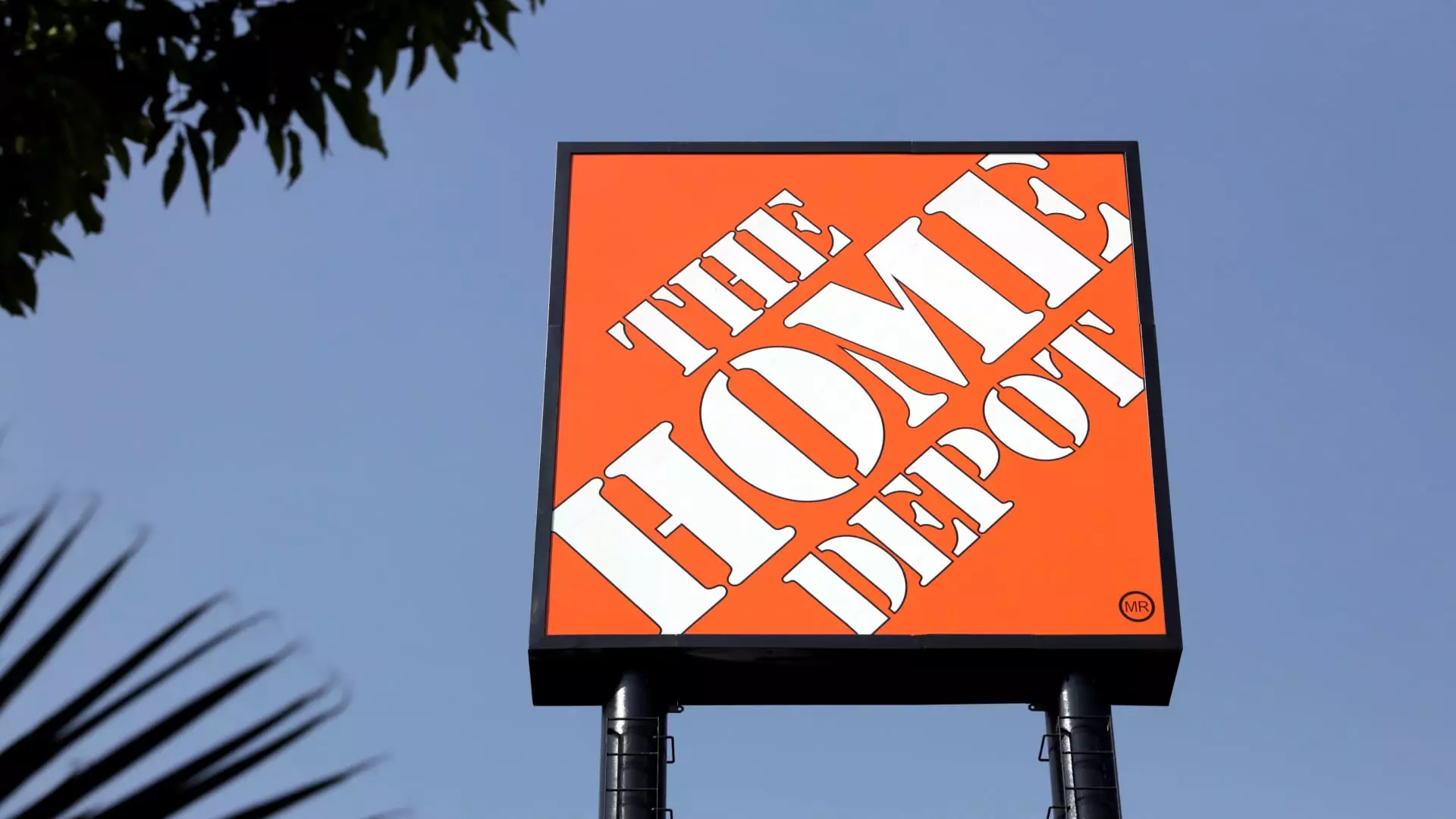Home Depot has recently reported a significant rise in quarterly sales, an increase of over 6% year over year. This surge can be attributed to a combination of factors, including a strategic acquisition and a demand spurred by natural disasters. However, as the company seeks to navigate the complexities of the current economic landscape, several challenges remain. Although the retailer has adjusted its full-year outlook upwards, the picture of consumer behavior is nuanced, showing both promise and caution. This article takes a closer look at Home Depot’s recent performance, ongoing challenges, and the implications for future growth.
The increased sales figures for Home Depot can, in part, be traced back to the acquisition of SRS Distribution, a supplier known for catering to professionals across various sectors, including roofing and landscaping. This acquisition not only enhances Home Depot’s product portfolio but also adds a substantial revenue stream expected to contribute approximately $6.4 billion. The projected total sales growth for the year has consequently been raised to around 4%, exceeding prior expectations of between 2.5% and 3.5%.
While the new acquisitions are a positive sign, Home Depot may need to ensure that the anticipated synergies from this purchase are realized efficiently. Integrating SRS Distribution into the Home Depot business model represents both a challenge and an opportunity. With careful management, it stands to strengthen the company’s position in the market.
Despite the strong sales figures, a troubling trend has emerged: many Home Depot customers are postponing home improvement projects. Chief Financial Officer Richard McPhail highlights that a significant portion of their client base, 90% of whom are homeowners, remain hesitant to spend. This consumer behavior is particularly notable as rising mortgage rates continue to foster uncertainty in the housing market. Individuals are currently waiting for a more favorable financing environment before committing to projects they express a keen interest in.
There exists what McPhail refers to as “pent-up demand,” indicating that while consumers are eager to remodel or upgrade their homes, economic anxiety is deterring them from taking action. This situation suggests a broader trend of consumer caution, which may adversely affect Home Depot’s long-term growth if not addressed.
The current economic environment is undeniably impacting Home Depot’s performance. Higher interest rates have resulted in stagnant housing turnover, discouraging homeowners from pursuing discretionary spending on renovations. Inflation has also played a role, as many individuals are unwilling to make substantial purchases during times of high living costs. Consequently, Home Depot has reported a decline in comparable sales, with a 1.3% decrease in the quarter compared to expectations that were even more pessimistic.
It is worth noting that these economic factors represent an evolving landscape. While Home Depot has achieved a slight year-to-year increase in overall revenue, this success may not be sustainable without a shift in consumer behavior. To navigate the forthcoming challenges, the company must adopt strategies that not only appeal to its current customer base but also engage those who are currently hesitant to engage in renovation.
Interestingly, Home Depot’s sales performance has been partially buoyed by favorable weather conditions and seasonal demand. Warmer and drier weather extended the outdoor buying season, prompting customers to invest in garden supplies and outdoor furnishings. Furthermore, the effects of Hurricanes Helene and Milton contributed to sales growth, as consumers sought supplies for preparation and repair. This scenario exemplifies how external factors such as climate events can create temporary advantages for home improvement retailers.
As the holiday season approaches, Home Depot may also see increased revenue through seasonal decor and gift items, which diversifies its offering beyond traditional home improvement supplies. The retailer’s iconic large outdoor decorations, such as Halloween and Christmas themes, have resonated well with consumers and may bolster sales during the holiday season.
As Home Depot steers its ship through challenging waters, the company’s future hinges on its ability to unlock consumer demand. The persistent uncertainty in the housing market, combined with fluctuating interest rates, presents a formidable barrier. Nevertheless, some analysts remain optimistic, suggesting that the worst of the economic downturn could be behind us, thereby positioning Home Depot for potential recovery.
In addition to securing consumer spending through innovative marketing and strategic sales efforts, Home Depot should continue to diversify its supply chains. Addressing fears surrounding import tariffs and rising costs due to inflation is crucial. The company has already taken steps to diversify its sourcing, which may help mitigate potential price pressures.
Home Depot stands at a crucial juncture, balancing recent sales growth against a backdrop of economic uncertainty. The company must focus on addressing consumer hesitation, capitalizing on strategic acquisitions, and preparing for trends driven by weather and seasonal demand. With a proactive approach, there remains potential for Home Depot to thrive even amidst challenges, paving the way for sustained long-term success.

